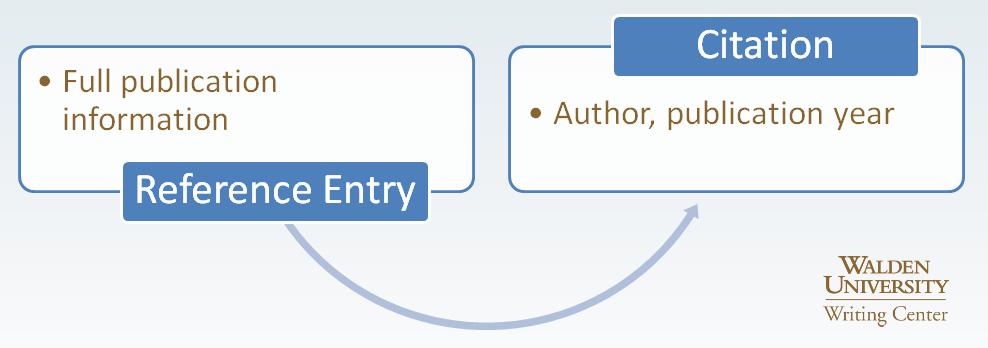A Match Made in Heaven: Reference Entries and Citations in APA
To me, knowing how and why rules apply to me always makes them
more relevant and makes me more inclined to learn and use them. This approach makes sense when talking about APA Style because APA rules can seem so
arbitrary. So, with the approach of helping students understand the reasoning
behind the APA rules, let’s start at the beginning: the reference list.
What is a reference list?
The
reference list is the foundation for citing sources in APA. In APA, writers
include all sources they use within the body of the paper, but only those sources, in the reference
list. This is a little different from a works cited or bibliography (lists of
sources used in other citation styles, like MLA and Chicago),
which sometimes include sources the author consulted but did not end up using
in the paper.
In APA, if you cite a source anywhere within the paragraphs
of the paper, it should also appear in the reference list. Similarly, only
sources used within the body of the paper are included in the reference list.
It’s always a good idea to proof for this relationship before finishing your
paper. If you take just one thing away from this post, remember this: Every source cited in your paper must have an entry in the reference
list, and your reference list should not contain any sources that you didn’t
cite in your paper. This rule applies for almost
every source you cite in-text. The only exception to this rule is personal communication citations, which do not have corresponding entries in the reference list.
What is its purpose?
The reason you need to list all of the sources you cite in the body of your paper in the reference list is so the reader can trace the information you used to inform your writing. Imagine that you incorporate a statistic regarding high school graduation rates in your paper; you include a citation to your source in the sentence that uses the statistic. The reader could then use that citation to find that source and its full publication information in your reference list, allowing the reader to find the source itself.
This function of the reference list is also why citations
are structured the way they are. Because sources are listed alphabetically by
author in the reference list, citations include the author(s) of a source and
the source’s publication year.
How do you create reference entries?
Because the purpose of the reference list is to help
the reader track the sources you used, a reference entry must include enough
information for the reader to find the original source. This includes the
following basic information:
- Author(s) of the source
- Publication year of the source
- Title of the source
- Publication information of the source
Check out these great resources to help you create reference entries:
- Common Reference List Examples page on our website
- Recordings of the APA Citations webinar series
- APA Style Blog
And, of course, if you ever get stuck creating a reference
entry, simply let us know via e-mail at writingsupport@waldenu.edu.
Now that you know the reasoning behind a reference list and
how it relates to the in-text citations in your writing, I hope you’ll have a
better understanding of why the
reference list is so important.
.png)
Beth Oyler is a Writing Instructor and the Webinar Coordinator for the Writing Center. She lives in Minneapolis and recently graduated with her MA in English.
Get new posts in your email inbox!
|
Subscribe to:
Post Comments
(
Atom
)





In regards to the title of an article, if there is a colon in the title, and the last word before the colon is an abbreviation, what is the proper use of period and colon?
ReplyDeleteWould it be '..... Walmart Inc.: The dominant ....', or is there an exception and it is formatted differently? Thank you. Greg Brown
Hi Greg, great question!
DeleteYou would still follow the format of the article title. For instance, if the title of the article is “Walmart Inc.: Exploring larger corporations”, then the period would be included after the abbreviation and a colon would be included after the period. However, abbreviations would usually not be included in titles, so for a title of your own work, we suggest not using an abbreviation. As well, a period isn’t needed after acronyms, and APA recommends not using them with a couple of exception, such as when using “U.S.” for United States and “U.K.” for United Kingdom when they are used as adjectives (but not when they are nouns).